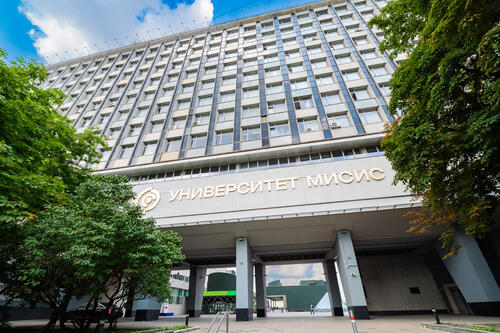A team of scientists from the NUST MISIS developed a new type of sensors that respond to mechanical pressure. A group of such sensors, when united in a measuring system, can provide a constant monitoring of nuclear power plants, pipelines and other industrial facilities.
The uninterrupted control of the industrial facilities, such as chemical and nuclear power plants, liquefied gas storage tanks and pipelines is absolutely crucial for ecology and economy. Even their partial destruction can cause an ecological disaster.
Therefore, it is essential to constantly monitor the machines and constructions that are subjected to the intense mechanical, thermal and radiation working loads. As a result, today the technologies that allow specialists to monitor the machines or constructions without interrupting their working process, i.e. nondestructive testing, are in great demand.
The key element of the newly developed sensors that respond to mechanical pressure is the amorphous ferromagnetic microwire. Made from the iron-cobalt alloys through special technology, the microwires possess unique combination of magnetic and strength properties. The technologies necessary for production of such microwires with the required physical properties are already widely practiced in the NUST MISIS Laboratory for Magnetic Measurements.
“In such microwires, with their diameters being narrower than a human hair, the external tensile stress leads to significant changes in B-H curve. Such changes can be recorded with the specialized electronic circuit. We took advantage of this scientific phenomenon by making our sensors capable of determining the applied mechanical stress (ranging between 1 to 1000 megapascals) as well as measuring the microwire’s length changes (ranging between 0.0001 and 0.1 mm) depending on microwires’ diameter,” said Sergey Gudoshnikov, leader of the project and head of the NUST MISIS Laboratory for Magnetic Measurements.
According to Gudoshnikov, the new sensor outclasses its analogues in the higher ultimate tensile deformation values as well as the potential ability of a contactless pick-up of signals.
The developed amorphous ferromagnetic sensor (AFS) can be used to monitor the working conditions of bridges, skyscrapers and oil and gas pipelines. The device can be also applied to shipbuilding and energy industries to unceasingly control the state and deformations of large marine vessels and tankers as well the static characteristics of hydro power plants and nuclear energy facilities. Additionally, the sensors can measure the state and extent of destruction of fire engines as well as other facilities of various applications before and after the extinguishing.
According to the experts, the new sensors are estimated to be 20 — 30% cheaper than other tensoresisters that are being used now. The newly-developed sensors are expected to enter the production stage in November 2016 after their prototype undergoes the necessary testing and patenting procedures.
“Our university has been successfully and fruitfully cooperating with the EMERCOM of Russia for a long time. A number of innovative developments from NUST MISIS’s scientists have already been taken into use by the Ministry. One of those developments is the magnetic material used for protective suits’ liquidators in emergency situations. In 2015 that material earned NUST MISIS scientists the Russian Government prize in the field of science and technology”, said Alevtina Chernikova, Rector of NUST MISIS.






